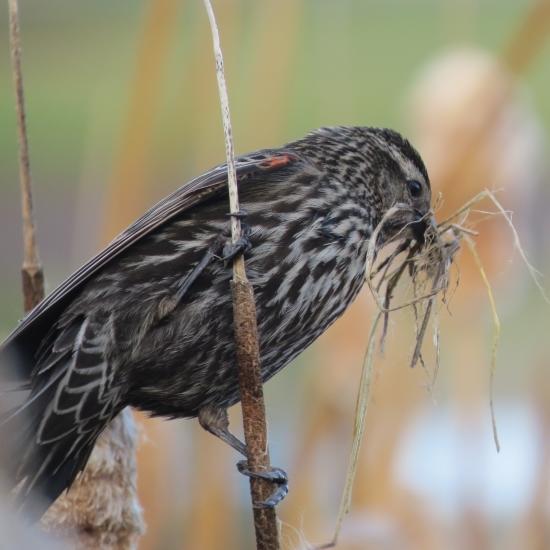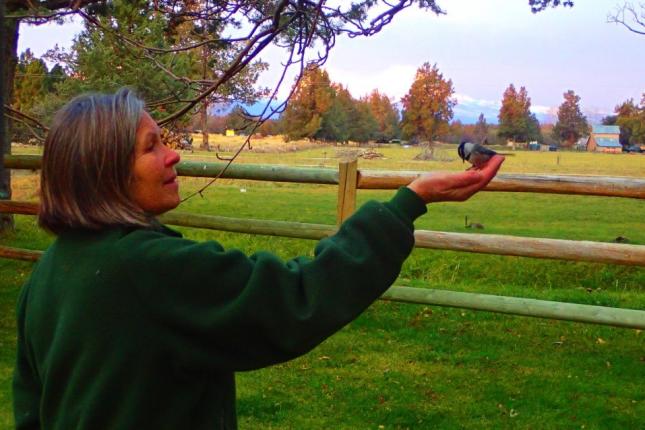 Carol's Corner
Carol's Corner
Crawling Though Cattails
What’s your best feature? I like to think mine is my knees—for these knees often bring me to a fresh perspective. Just the other day, while out on my walk, the Red-winged Blackbirds captivated me with their spring antics in marshy pond near my home. I returned home with wet knees, but what I found made it worth the crawl.
At first, it was the flashy-look-at-me, male Red-winged Blackbird, wearing his heart on his sleeve, singing his tumbling-bubbly song that caught my attention. He paraded across the tops of cattails in grand fashion. Often, it is the obvious that vies for our attention. But suddenly, I noticed the inconspicuous female—attired in the camouflage coloration of a drab-brown housecoat—for good reason—she can nest within feet of you, but you would never know it!

And that’s what drew me to my knees. When she dove into the cattails with a mouth full of nesting material, I knew I must follow. Problem is, Red-winged Blackbirds are known to build a nest just above water—hidden deep within brushy marsh. The water acts as a moat, providing protection from predators, making access difficult. Trust me, I know. Curiosity got the better of me and I crawled into the wet muck just far enough for a view.
What I saw astonished me—she was building her nest. The female Red-winged Blackbird builds a nest by weaving long strands of plant material around vertical stems of marsh plants. She then fashions a cup from other natural materials and glues it together with mud. This industrious blackbird had completed the woven basket and was now lining the cup with soft, dry grasses.
What happens next will go fast—she will lay eggs, incubate them for 12 days, and the young will fledge just 12 days after hatching. I can’t wait to continue my watch.
I’m reminded of the words of poet Mary Oliver:
“Let me keep my mind on what matters, which is my work, which is mostly standing still and learning to be astonished."
Get outside and be astonished today.
Have a Bluebird Day!
Carol


